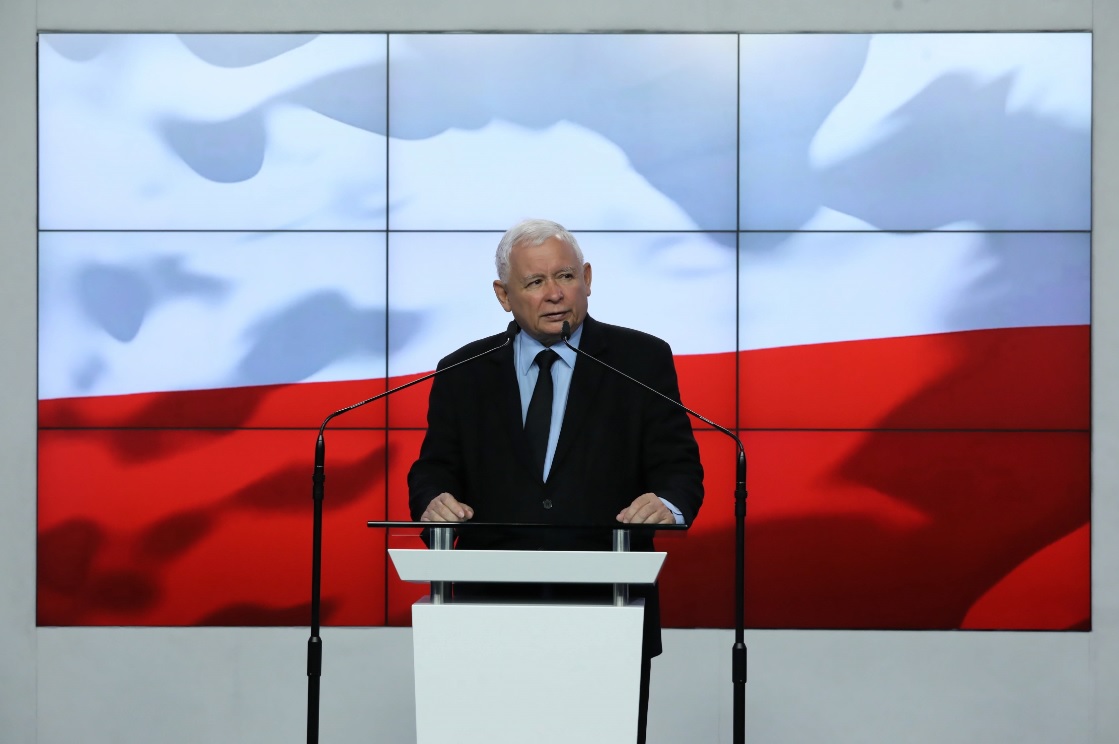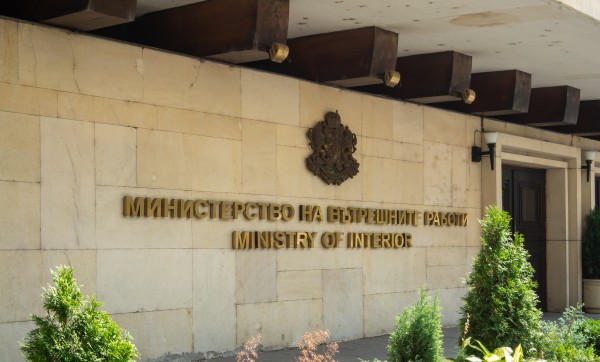In most democracies, the appointments for regulatory bodies overseeing public service media are a relatively dull affair, taking place without contention or controversy. In Poland, however, the recent election of three candidates to an influential media council ignited an ongoing debate about independent public service broadcasting.
In addition to the fact that the trio appointed are all serving MPs in the governing Law and Justice (PiS) party, the criticism stemmed from the controversial role of the regulator they now control: the National Media Council (NMC).
This is because the NMC is an integral part of the institutional machinery of media capture which PiS has constructed in the last few years to establish greater control over the country’s public media organs and distort them into government mouthpieces.
With the European Commission developing its landmark European Media Freedom Act, the case of Poland’s National Media Council is a clear example of the challenges the EU will face in safeguarding the independence of the bloc’s public broadcasters from political pressure.
———
On 22 July, Poland’s lower house of parliament, the Sejm, elected three members to the National Media Council: PiS MPs Joanna Lichocka and Krzysztof Czabański, who retained their seats, and their PiS colleague Piotr Babinetz. All three were recommended by their party and will now serve a six-year term.
The three PiS MPs perpetuate the ruling party’s majority in the five-member council, with the other two members appointed by President Andrzej Duda from a list of potential candidates proposed by the two largest opposition groups. As decisions are made through a simple majority vote, however, these councillors have little impact on decision-making.
Representing the decisive voice on the NMC, PiS MPs will continue to have sole responsibility for appointments and dismissals of the management and supervisory boards of the Polish Television (TVP), Polish Radio and the Polish Press Agency. Their decisions can be made without justification and are not subject to judicial appeal.
Through the National Media Council, PiS therefore wields significant power in deciding the composition of the country’s public service media, handing the party indirect influence over shaping programming and editorial policy. The recent elections have significant consequences for the future of public broadcasting in Poland and effectively solidify the control of PiS over the regulator well past the next election right up until 2028.
—
Such a high level of government control over a body responsible for overseeing public media in Poland is no coincidence.
After PiS took power in 2015, the NMC was established the following year through controversial changes to the media law. These reforms – echoing those enacted by the Fidesz government of Viktor Orbán soon after its own election – ripped powers away from the existing constitutional body, the National Broadcasting Council (KRRiT), and established a separate media regulator dominated, by design, by political allies and party MPs.
At the time, the proposed changes drew criticism from press freedom groups and the international organizations. Although the country’s Constitutional Tribunal ruled in December 2016 that the circumvention of the KRRiT’s mandate was unconstitutional and ordered the changes to be reversed, PiS used a legal ambiguity to move forward regardless, leading to the resignation of senior media managers and their replacement by political acolytes.
Using its new control over hiring and firing of senior management, in 2016 the body then oversaw a purge of hundreds of TVP’s journalists and editors, many who were then replaced by figures aligned with the party’s ideology. Under the National Media Council’s watch, Telewizja Polska has since been distorted into one of the most unbalanced and politicized broadcasters in the EU.
TVP’s news coverage is systematically biased, with reporting overwhelmingly favourable to the ruling party. Certain opposition parties are blocked from appearing on the airwaves at all. The broadcaster has regularly been accused of spreading disinformation and airing xenophobic and anti-Semitic views. During elections in particular, coverage is also deeply one-sided and acts as a propaganda tool for the government and its allies. Reporting is selective and self-censorship amongst journalists is widespread.
Due to PiS’s control, the council’s appointments for management of the public broadcasters are non-transparent and suffer from regular political pressure and government interference. When for example the Council voted to remove the head of TVP and staunch PiS ally Jacek Kurski from his post in 2020, PiS leadership intervened and the regulator was forced into an embarrassing reversal.
As a result of these high levels of political influence, TVP consistently ranks as the least trusted major news source in the country. Repeated concerns about the lack of independence at the country’s public broadcasters and the NMC have been highlighted by the Media Pluralism Monitor and the European Commission, mostly recently in its 2022 Rule of Law Report, as well as numerous other international bodies and press freedom groups.

The leader of the Poland’s ruling Law and Justice (PiS) party Jaroslaw Kaczynski in Warsaw, Poland. EPA-EFE/Tomasz Gzell
Law and Justice’s creation and control over the National Media Council is illustrative of the government’s wider campaign of media capture in recent years.
Since coming to power, PiS has undertaken a systematic effort to gain control over the country’s system for media regulation, control public broadcasting, weaponize state advertising resources, and engineer the takeover of independent media by entities linked to the ruling party. These interlinked efforts constitute key components of media capture.
This state interference in the media landscape – including at TVP – has long been justified by PiS as rebalancing a media landscape that it claims is stacked against conservative and Catholic views. To address this situation, the government pledged to oversee the “repolonization” of the media market, i.e., to ensure that Polish news outlets are owned by Polish capital. Couched in language of pluralism and national sovereignty, these efforts have instead been aimed at strengthening the market influence of pro-government media and supressing critical news reporting.
In addition to the capture of TVP, this repolonization drive has taken other forms. In 2020, state-controlled oil giant PKN Orlen acquired publisher Polska Press from a retreating foreign owner, handing it control over 20 out of Poland’s 24 regional newspapers. More than a dozen editors were then dismissed or stepped down, only to be replaced by figures from pro-government titles or TVP. Since then, reporting critical of the government has been muzzled.
This was followed in 2021 by an attempt by PiS to pass media ownership legislation which would have sliced through the shareholder structure of the largest and most influential foreign-owned television broadcaster, TVN, leaving the company open to a potential hostile takeover by capital linked to government allies. The draft law was vetoed by the president.
Most recently, in April independent commercial television broadcasters raised concerns that the switch-over to a new broadcasting standard would negatively affect all media except for state-owned TVP, which was temporarily exempted from the change by the government for national security reasons. The media groups argued the switchover was a premeditated action intended to limit here influence and steer more viewers to TVP.
Set against this backdrop, continued control over the National Media Council is a small but crucial piece in the puzzle of PiS’s media capture, a model which requires all its component parts to function to achieve the greatest success. In Poland, the result of this success – and the lack of effective action to counter it – has been the steady erosion of media freedom and democratic values over the past seven years.
——
While the European Commission has repeatedly expressed concerns about the National Media Council and its lack of independence, the EU’s executive body has so far had little success in enforcing the functional independence in Poland’s media regulators.
One key tool here is the EU’s Audiovisual Media Services Directive (AVMSD), which among other things obliges member states guarantee that all national authorities responsible for media market regulation are functionally independent and free from political interference. After a long delay, Poland implemented the AVMS Directive and approved an amendment to the Broadcasting Act in August 2021.
However, aside from establishing stronger rules for dismissing members from the KRRiT, its effect in enforcing greater functional independence of the body has so far been negligible. Due to the questionable constitutional status of the NMC, it is unclear whether the EU Directive also applies to this body. Until this legal issue is fully resolved, PiS’s control over the Council appears to be secure.
This situation could change with the EU’s European Media Freedom Act (EFMA), the draft of which is due to be presented in September 2022. While the contours of the Commission’s flagship media freedom initiative have yet to be filled in, it has indicated it will look to bolster the AVMS Directive with additional safeguards related specifically to the governance of public media across the EU, including measures to prevent “politicization”.
What form these measures take – and more widely whether they will have any real impact on limiting the political capture of bodies such as the National Media Council, and indeed the KRRiT – will be a major question moving forward. With parliamentary elections scheduled in Poland for autumn 2023, and PiS likely looking to ensure its continued control over public broadcasting, the clock is already ticking.
This article by IPI is part of the Media Freedom Rapid Response (MFRR), a Europe-wide mechanism which tracks, monitors and responds to violations of press and media freedom in EU Member States, Candidate Countries, and Ukraine. The project is co-funded by the European Commission.




